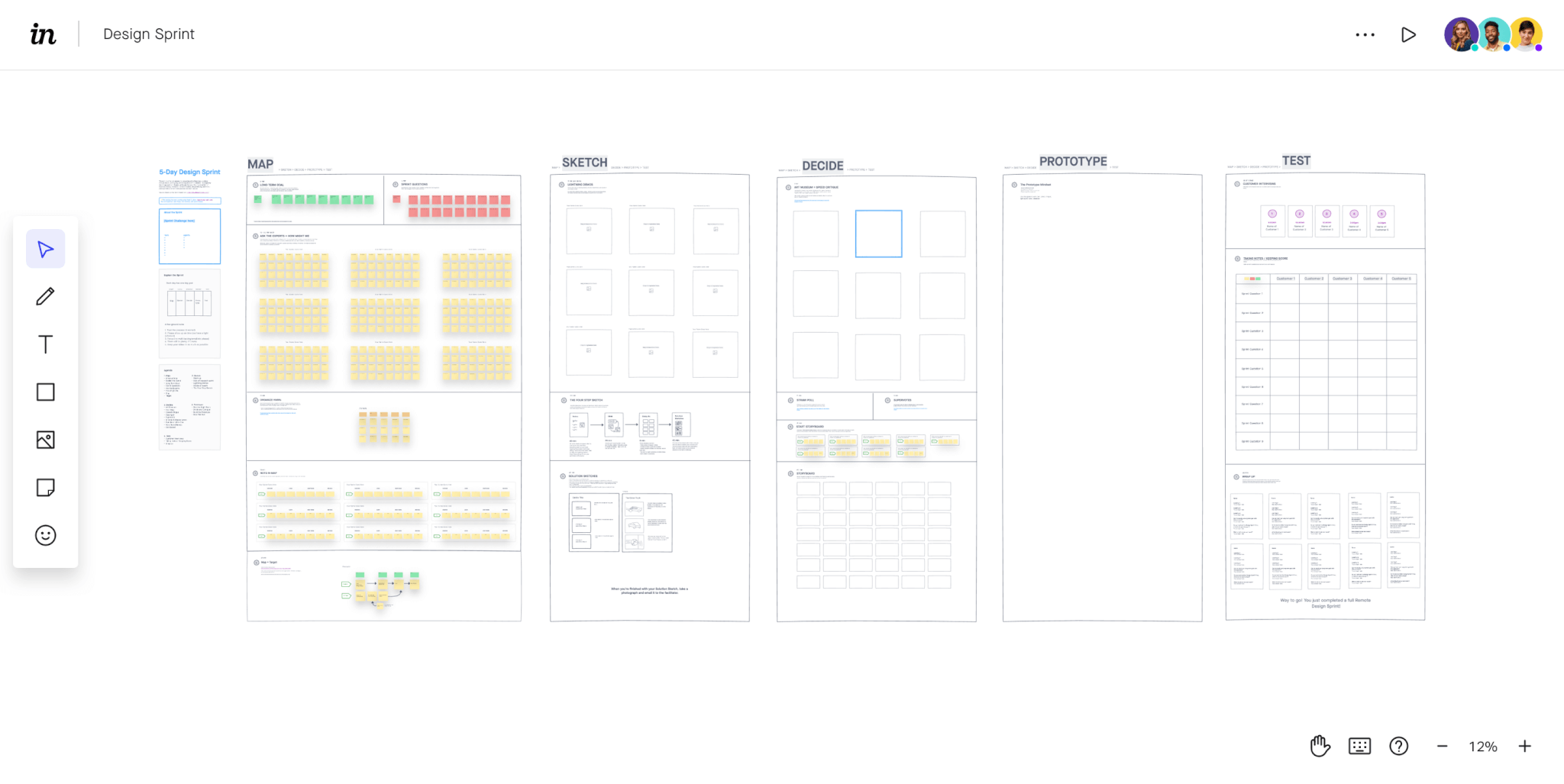
By Kosta Bolgov

Use this template, including a guide based on the google sprint process, to run a 5-day design sprint—even if your team is remote. Contributed by Design Sprint Ltd and available for free.
Use TemplateWith this design sprint template by Stéph Cruchon of Design Sprint Ltd, you’ll facilitate a successful remote design sprint. Bring your team together to develop an idea from conception to prototype in five days.
Stéph Cruchon has applied years of experience working alongside Jake Knapp, the creator of the design sprint at Google, to develop this template so that remote teams could enjoy the same success they would see during an in-person sprint.
You don’t need to start from scratch. Use this template to facilitate a sprint similar to those of the world’s top design teams.
Gain an in-depth understanding of how to facilitate a sprint, including tools, preparation, and modified tactics. Written by Jake Knapp, John Zeratsky, and Jackie Colburn, authors of Sprint! and partners at Google Ventures, the guide will show you how to work through each day of your sprint.
Choose the right people to be part of your design sprint, and clarify their roles. Brief the sprint’s facilitator and decider and direct them to the remote guide.
Naming your sprint will clarify your team’s objectives and make it easier to reference the freehand later.
Ask yourself and your team one question: “What do we want to have figured out at the end of these five days?” Develop a concise, one-line statement to refer back to throughout your sprint.
Work through each section of the sprint as defined within the instructions. Be sure to work collaboratively and document ongoing conversations for later reference.
At the end of your design sprint, your team should have a final approach on next steps to reach long-term goals.